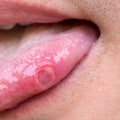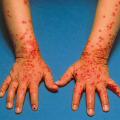Sores and blisters can appear on the skin for a variety of reasons, and it can be difficult to diagnose their cause without a physical examination. Knowing the signs and symptoms of different types of sores and blisters can help you determine whether you should see a doctor. In this article, we will discuss how to diagnose sores and blisters through physical examination, as well as potential causes and treatments. When diagnosing sores or blisters, it is important to identify the pattern of the affected area.
This can help determine the underlying cause, which can range from an infection to an allergic reaction. With a physical examination, your doctor will look for any signs of infection, such as redness, swelling, or warmth of the skin. He or she may also take samples of any fluid from the affected area for laboratory testing. In this article, we will discuss the importance of a physical examination when diagnosing sores and blisters, as well as potential causes and treatments.
We hope that by the end, you will have a better understanding of why physical examinations are necessary for diagnosing sores and blisters, and how to best treat them. A physical examination for sores and blisters typically includes a visual inspection of the affected area, as well as a physical exam. During the visual inspection, the doctor will look for any signs of sores or blisters, such as redness, swelling, or scabbing. They may also take a swab sample from the sore or blister to test for any bacteria or viruses that may be present. During the physical exam, the doctor may press on the sore or blister to check for any tenderness or pain.
The doctor may also take a sample of fluid from the sore or blister to test for any bacteria or viruses that may be present. Once the physical examination is complete, the doctor will review the results to determine if there is any indication that the sores or blisters are caused by genital herpes. If there is evidence of genital herpes, they may order additional tests such as blood tests or PCR testing to confirm the diagnosis. It is important to note that a physical examination alone is not enough to diagnose genital herpes.
Other factors such as a person’s medical history and other symptoms must also be taken into consideration before a diagnosis can be made. Additionally, even if a physical examination indicates that the sores or blisters are caused by genital herpes, it is still possible for other skin conditions to cause similar symptoms. Therefore, it is important to have additional testing done to confirm the diagnosis.
The Benefits of Physical Examinations for Diagnosing Genital Herpes
Physical examinations are an important part of diagnosing genital herpes because they allow a doctor to examine the affected area and determine the best course of treatment. A physical examination can also help rule out other conditions that may be causing similar symptoms.Additionally, physical examinations are relatively quick and easy procedures that can provide valuable information about a person’s health. Through a physical examination, a doctor can assess the size, color, texture, and location of any sores or blisters. This information can help the doctor determine if the symptoms are caused by genital herpes or another condition. For example, a physical examination can reveal if the sores or blisters are clustered together or scattered throughout the affected area. This information can be used to rule out other conditions such as psoriasis or eczema. In addition to providing valuable information about a person’s condition, physical examinations are also quick and easy procedures.
These examinations usually only take a few minutes and can provide immediate results. This is especially beneficial when it comes to diagnosing genital herpes as it allows for a timely diagnosis and treatment plan. Overall, physical examinations are an important part of diagnosing genital herpes. Through these examinations, doctors can assess the size, color, texture, and location of any sores or blisters and determine if they are caused by genital herpes or another condition. Additionally, physical examinations are quick and easy procedures that provide immediate results, which is beneficial for timely diagnosis and treatment. A physical examination is an important part of diagnosing genital herpes.
It allows doctors to examine the affected area and determine if there is any indication that the sores or blisters are caused by genital herpes. Additionally, physical examinations can help rule out other conditions that may be causing similar symptoms. However, it is important to note that a physical examination alone is not enough to diagnose genital herpes, and additional testing may be necessary to confirm the diagnosis. In conclusion, physical examinations can provide valuable insight into the cause of sores and blisters, and should be used as part of a comprehensive approach when diagnosing genital herpes. With the right information and guidance, physical examinations can be a powerful tool in correctly diagnosing and treating genital herpes.


